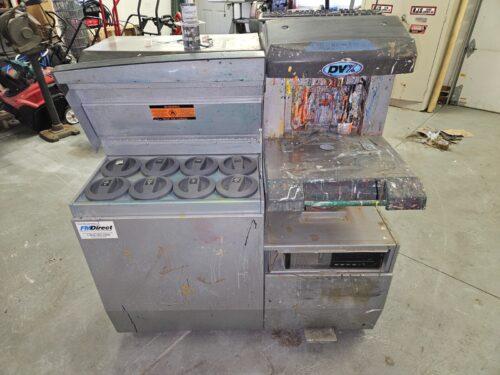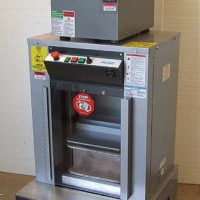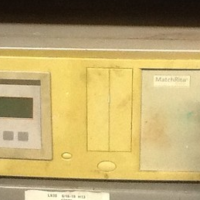
If you own a Fluid Management dispenser, shaker, or mixer, you may want to know exactly when it was manufactured. This can be useful for ordering replacement parts, planning maintenance, deciding whether to repair or replace the machine, or resale value.
Fortunately, every Fluid Management machine comes with a serial number plate that makes it easy to determine the month, year, product line, and even the production order.
In this guide, we’ll explain how to read the serial number and then walk through four real examples so you can confidently decode your own.
How to Read a Fluid Management Serial Number
A Fluid Management serial number always follows the same structure (The only exception is Fast-Fluid equipment, example lower in this post):
-
First 2 digits (front) → Month of manufacture
-
Middle letters/numbers → Product designation (line and model)
-
Next 3 digits (before the year) → Production sequence (the unit’s build number for that month)
-
Last 2 digits (back) → Year of manufacture

Real-World Examples
 Example 1:
Example 1: 04DX2002606
-
04 → April
-
DX20 → AccuTinter 2000 with DVX pumps
-
026 → 26th unit made that month
-
06 → Year 2006
✅ This machine is an AccuTinter 2000 with DVX pumps, built in April 2006, and it was the 26th one made that month.
 Example 2:
Example 2: 04NSC8000916
-
04 → April
-
NSC80 → NSC80 model
-
009 → 9th unit made that month
-
16 → Year 2016
✅ This machine is an NSC80, built in April 2016, and it was the 9th one made that month.
 Example 3:
Example 3: 04GQF19197
-
04 → April
-
GQF → GQF series
-
191 → 191st unit made that month
-
97 → Year 1997
✅ This machine is a GQF series, built in April 1997, and it was the 191st one made that month.
 Example 4:
Example 4: 11H104404
-
11 → November
-
H1 → H1 series
-
044 → 44th unit made that month
-
04 → Year 2004
✅ This machine is an H1 series, built in November 2004, and it was the 44th one made that month.
Why This Matters
-
Maintenance & Parts: Knowing the exact age of your machine helps when ordering replacements or scheduling preventive care.
-
Service Support: Technicians may ask for the age and build sequence when troubleshooting.
- deciding whether to repair or replace: When your dispenser or mixer is 7 to 10 years old or older you may want start considering replacement vs. repair.
-
Resale Value: Buyers feel more confident when the age of the machine is documented.
Final Thoughts
Decoding the age of your Fluid Management dispenser or shaker is straightforward once you understand the format of the serial number. Just remember:
-
First two digits = month
-
Last two digits = year
-
Three digits before the year = unit number
-
Everything else = product line/model
With these rules and the examples above, you’ll always be able to tell exactly when your machine was made and where it fits in the production line.
 Exceptions for Fast-Fluid equipment
Exceptions for Fast-Fluid equipment
While fully management equipment always follows the same methodology newer equipment from Fast-Fluid follows a different model and generally just print the actual manufacture, date and month on the serial number plate directly:
You can clearly determine the age and model of the dispenser here by reviewing the Model and Prod. Date fields:
- Model: X-PROTINT
- Prod. Date: 07-February-2025 → February 7th, 2025
✅ This machine is an X-PROTINT, built in February 2025,





